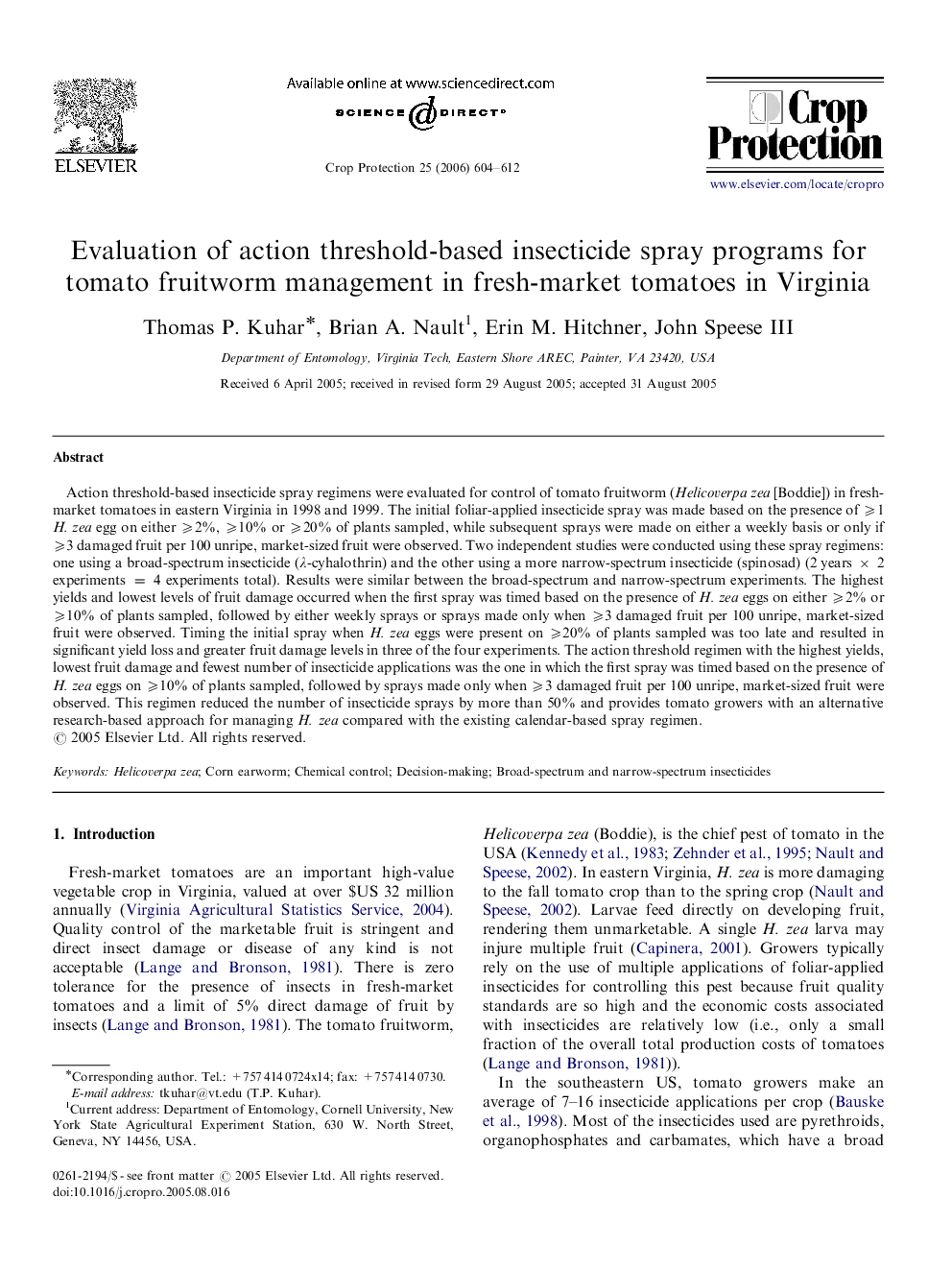| Article ID | Journal | Published Year | Pages | File Type |
|---|---|---|---|---|
| 4508110 | Crop Protection | 2006 | 9 Pages |
Abstract
Action threshold-based insecticide spray regimens were evaluated for control of tomato fruitworm (Helicoverpa zea [Boddie]) in fresh-market tomatoes in eastern Virginia in 1998 and 1999. The initial foliar-applied insecticide spray was made based on the presence of ⩾1 H. zea egg on either ⩾2%, ⩾10% or ⩾20% of plants sampled, while subsequent sprays were made on either a weekly basis or only if ⩾3 damaged fruit per 100 unripe, market-sized fruit were observed. Two independent studies were conducted using these spray regimens: one using a broad-spectrum insecticide (λ-cyhalothrin) and the other using a more narrow-spectrum insecticide (spinosad) (2 years à 2 experiments = 4 experiments total). Results were similar between the broad-spectrum and narrow-spectrum experiments. The highest yields and lowest levels of fruit damage occurred when the first spray was timed based on the presence of H. zea eggs on either ⩾2% or ⩾10% of plants sampled, followed by either weekly sprays or sprays made only when ⩾3 damaged fruit per 100 unripe, market-sized fruit were observed. Timing the initial spray when H. zea eggs were present on ⩾20% of plants sampled was too late and resulted in significant yield loss and greater fruit damage levels in three of the four experiments. The action threshold regimen with the highest yields, lowest fruit damage and fewest number of insecticide applications was the one in which the first spray was timed based on the presence of H. zea eggs on ⩾10% of plants sampled, followed by sprays made only when ⩾3 damaged fruit per 100 unripe, market-sized fruit were observed. This regimen reduced the number of insecticide sprays by more than 50% and provides tomato growers with an alternative research-based approach for managing H. zea compared with the existing calendar-based spray regimen.
Related Topics
Life Sciences
Agricultural and Biological Sciences
Agronomy and Crop Science
Authors
Thomas P. Kuhar, Brian A. Nault, Erin M. Hitchner, John III,
